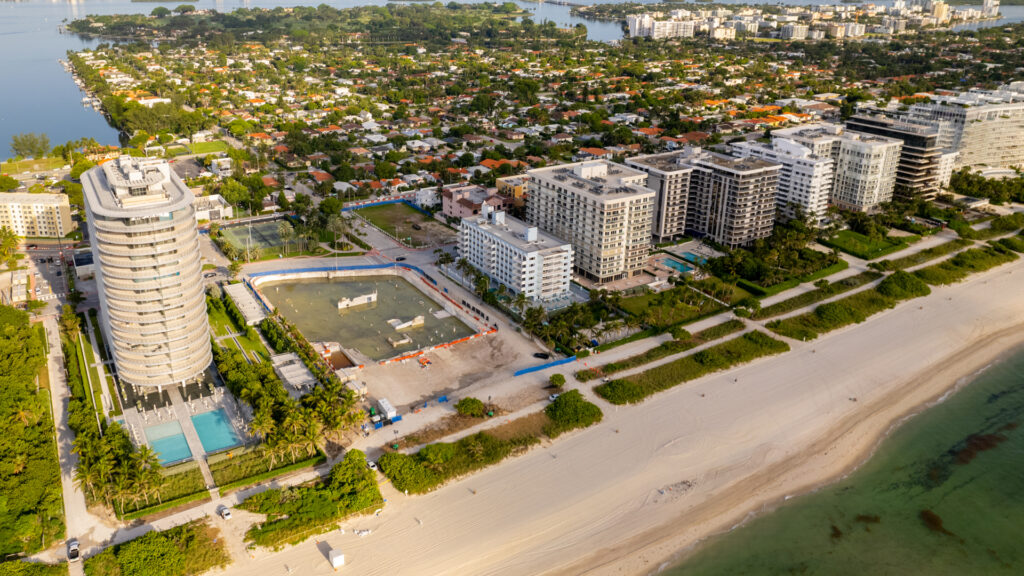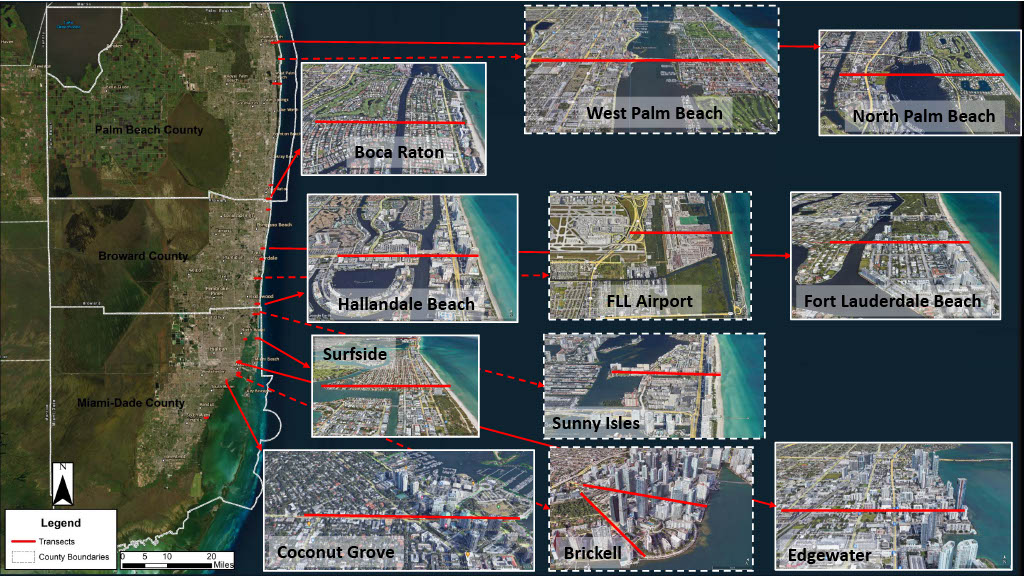By Bella Kubach, The Invading Sea
A team of Florida International University researchers is planning to create a network of monitoring wells along the coast of Southeast Florida to observe whether sea-level rise is destabilizing coastal buildings.
The wells are part of a study that is funded by a more than $9 million federal grant. The study aims to determine the impact of saltwater on the foundations of these buildings.
The collapse of the Champlain Towers South condominium tower in Surfside in 2021 prompted the urge for this research, though federal investigators are now focusing on construction flaws in the building’s pool deck as a possible cause of the collapse.

Nonetheless, Mike Sukop, FIU professor and head of the newly funded monitoring network, still thinks it’s important to look beneath the surface of coastal buildings.
The Surfside collapse “led to questions about whether there could be corrosion going on in the steel-reinforced concrete piles that are holding many buildings up,” Sukop said.
U.S. Rep. Debbie Wasserman-Schultz, D-Weston, helped secure the grant. She advocated for its importance, especially in her district that sees direct impacts of sea-level rise.
With funding secured, Sukop and his team have started the planning process to be able to detect long-term sea-level rise impacts, though he said, “a lot hasn’t been solidified yet.”
However, there are a few things his team is very interested in learning about, such as water levels, groundwater salinity and tidal fluctuations “in up to 80 wells in as many as eight cities,” according to Sukop.
“Some of the methods would be similar to those used in the network of wells tracking large-scale saltwater intrusion into the region’s drinking water supply,” Sukop said.
His team is also certain that all the data they collect will be available to people in real-time through an online dashboard.

As sea levels rise continue to rise, this kind of information is in higher demand.
Saltwater intrusion beneath buildings can cause corrosion to metal and electrical systems and affect drinking water, potentially increasing treatment costs or causing other problems.
But even with these new monitoring wells in place, Harold Wanless, sea-level rise expert and professor at University of Miami’s Department of Geography and Sustainable Development, said this problem is not going away — and South Florida is at high risk.
“Global rise for the last century has been about eight or nine inches. We’ve been over 12,” Wanless said.
In the next 30 years, Wanless projects there could be about one-to-two feet of further sea-level rise.
“I would say that the western part of Miami-Dade County and a much larger part of Broward County is probably going to be very difficult to live in day-to-day with two-foot rises,” Wanless said.
Bella Kubach is a Florida Atlantic University senior majoring in multimedia journalism who is reporting for The Invading Sea during the spring 2024 semester.
Sign up for The Invading Sea newsletter by visiting here. If you are interested in submitting an opinion piece to The Invading Sea, email Editor Nathan Crabbe at nc*****@*au.edu. To learn more about the effect of saltwater intrusion on Florida’s drinking water, watch the video below.



